

Josh Nevett
CarExpert's top five mid-size SUV reviews of 2025
3 Days Ago
A value-packed base electric car, the MG 4 is the new benchmark for those wanting an all-electric vehicle on a budget.
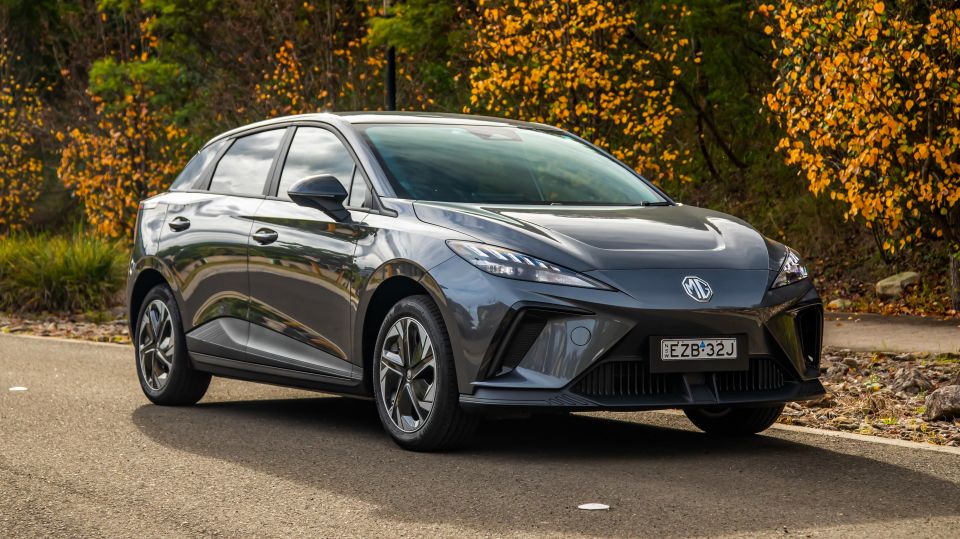
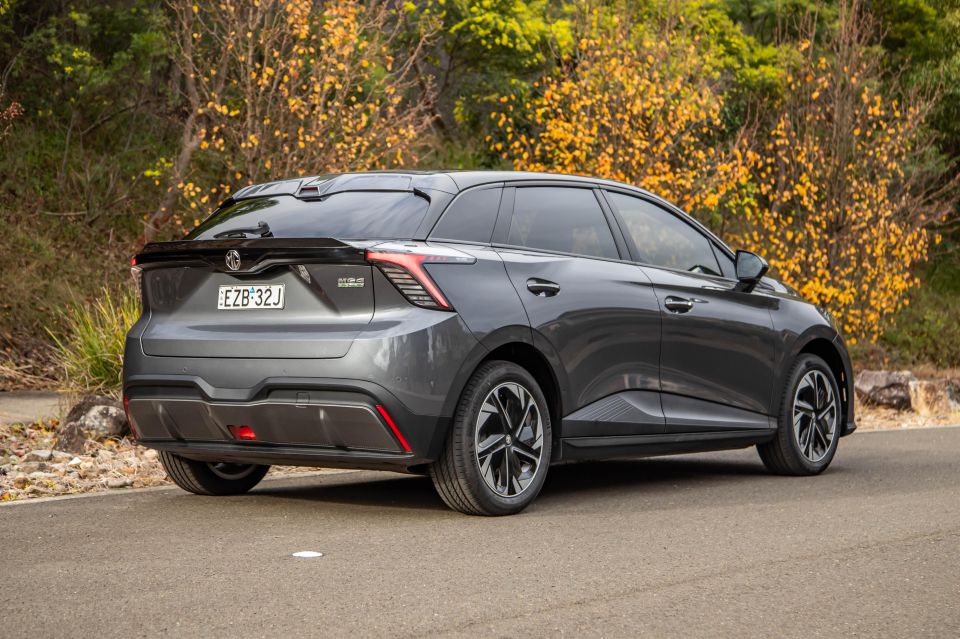

Quickly see how this car stacks up against its competition. Select any benchmark to see more details.
Where expert car reviews meet expert car buying – CarExpert gives you trusted advice, personalised service and real savings on your next new car.
This is it. This is the “BINGO!” moment for MG, because the MG 4 electric hatchback is an absolute beauty of a thing.

Not literally, according to some punters I spoke to who weren’t a fan of the look of the car, but in round terms this is a wholly impressive compact electric car that offers immense value for money and a heap of standard technology and safety equipment.
What’s more impressive, is that the base 51 Excite (or Excite 51 – the naming convention isn’t yet confirmed) is probably going to do the job for the majority of people who want a budget-friendly EV… so long as they don’t need a huge amount of driving range.
But there are other MG 4 variants that will theoretically tick that box. I’ll fill you in on the range in this review.
For about 24 hours, the MG 4 was the most affordable electric car on the market in Australia at $38,990 plus on-road costs – but then BYD made a splash with its pricing for the Dolphin ($100 less than the base MG 4).
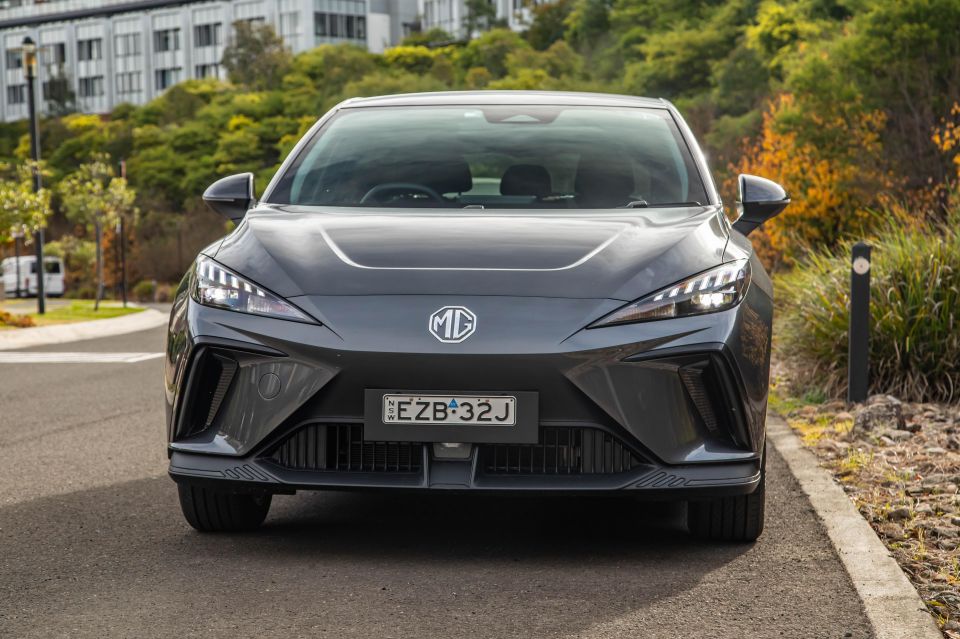
Even so, this is a very affordable electric hatch. As I mentioned, this pre-launch drive of the MG 4 was in the entry-level Excite 51kWh, and for the money it offers competitive range and heaps of standard spec, which we’ll cover off below.
If you’re spending this kinda cash and want an EV, then you’re likely also looking at the BYD Dolphin, the base model of which kicks off at $38,890, which has slightly lower claimed range (340km WLTP) and slower DC charging (60kW v 88kW for the MG).
The other budget-friendly, Chinese-made electric hatch that sits near these is the GWM Ora, which has seen a price drop to $39,990, but has a slightly lower EV driving range (320km). Neither of those other models are rear-wheel drive like the MG, though, and that could count for more than money to some people. I’ll fill you in when we get to the driving section.
Below is the MSRP pricing (before on-road costs) for each of the variants, and for some additional context, I’ve included the driving range (WLTP rated) for each model.
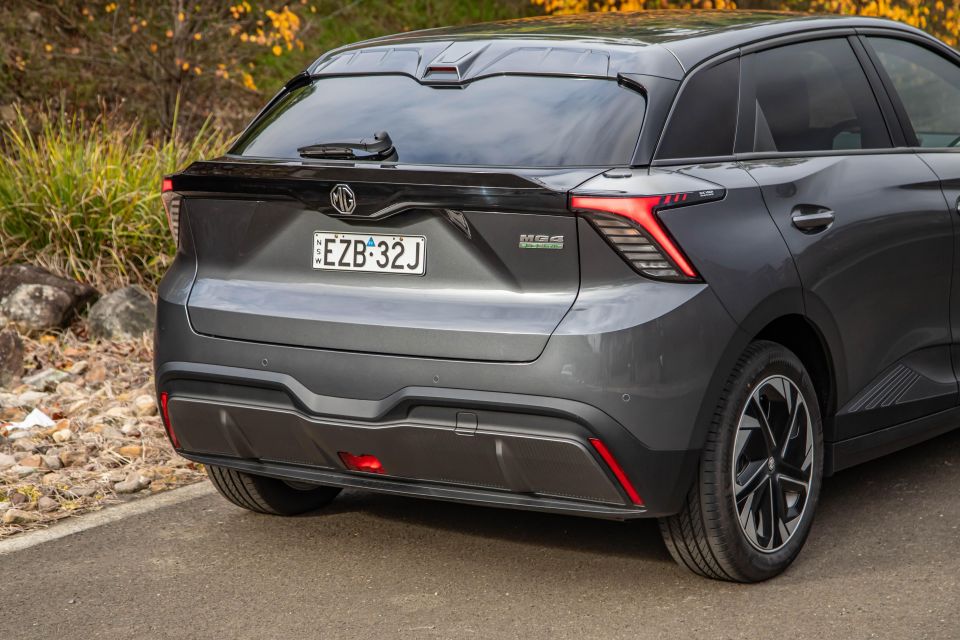
2023 MG 4 pricing:
Prices exclude on-road costs
Buy your new car without the stress. It's fast, simple and completely free.

Great service from Travis and team, second time I have used this business would not hesitate to recommend them to anyone
Craig C.
Purchased a Ford Ranger in Sunshine Coast, QLD
CarExpert helped Craig save thousands on his Ford Ranger, now let us save you on your next new car.
Find a dealWhile I called the BYD Atto 3’s interior “eclectic”, the word that comes to mind in the MG 4’s case is “austere”.
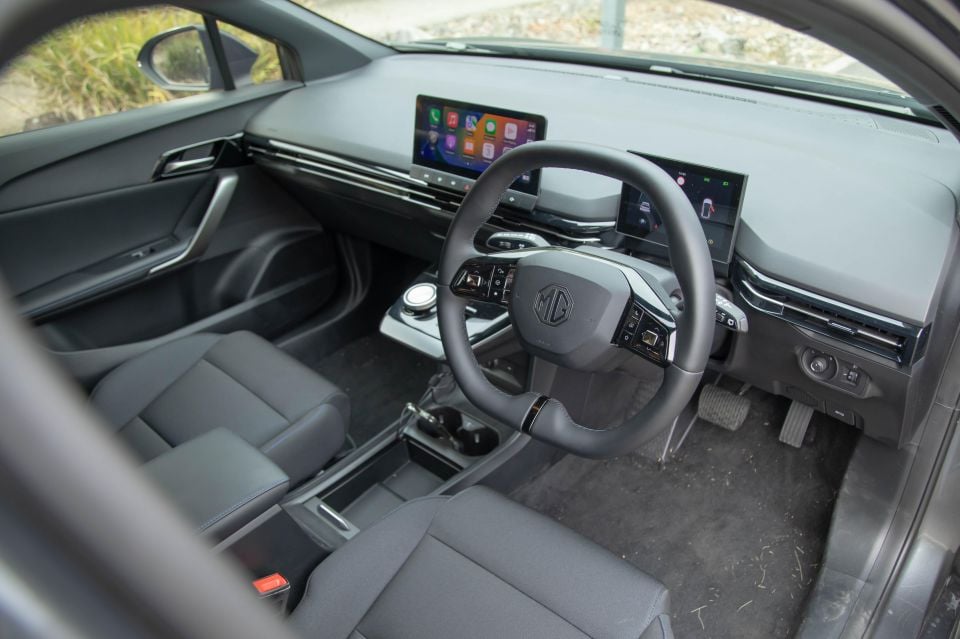
It is very minimalist, with a simple and uncomplicated black-on-black finish that won’t be to all tastes, but will arguably be more palatable than the divisive design of the BYD’s interior.
The dashboard is broad and simple, punctuated by the small 7.0-inch driver info display and the more prominent 10.25-inch multimedia unit, thankfully backed with a row of buttons below for some of the controls for it.
It has Apple CarPlay and Android Auto, and it is pretty crisp and nice to look at, but the touch-sensitivity seems a bit slow, with commands often taking one or two ‘button presses’ to activate. That’s not an MG 4-specific thing, it’s an MG-more-generally thing.
And further, the buttons below could be better. They don’t feel premium like, say, in a Honda, and the options are a bit limited. For instance, there’s a fan on/off button, but not a button to adjust the fan speed. And while there are volume up/down buttons, you don’t get a recirculation button for the A/C.
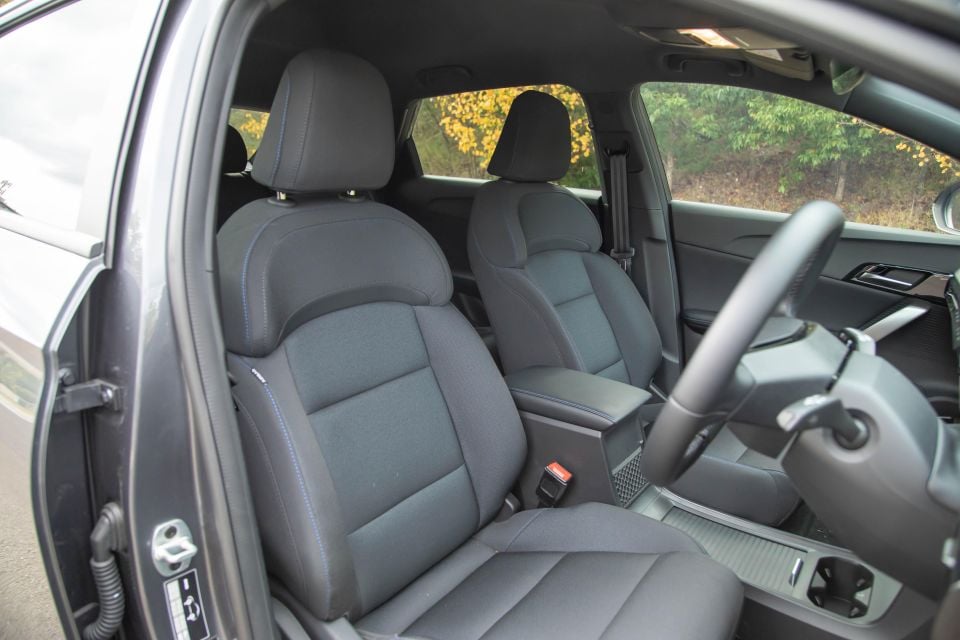
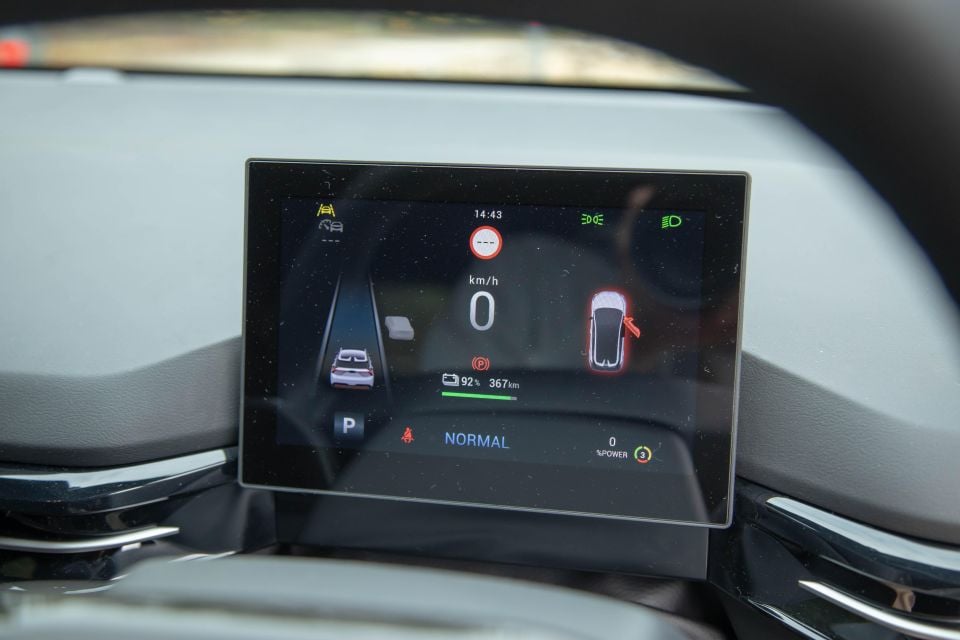
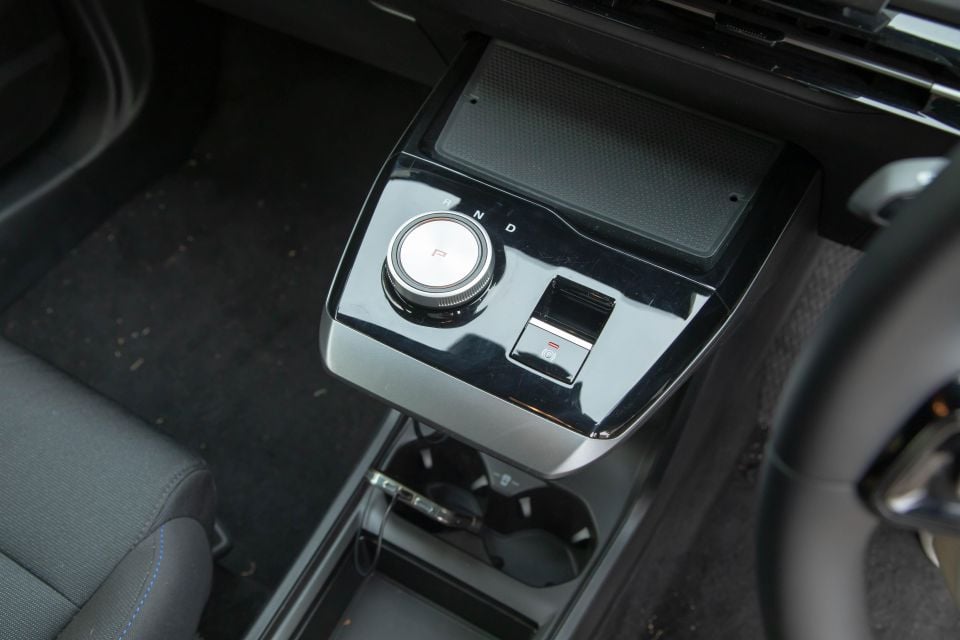
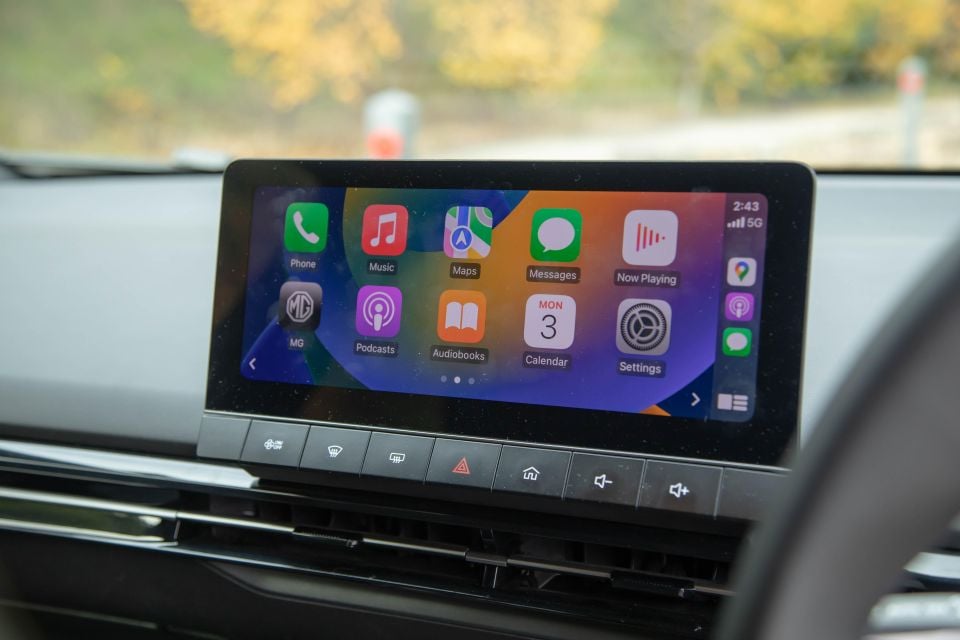
Even so, it is more usable than some other cut-price vehicles from China that prioritise everything being controlled through the media screen. You still have to do a lot through it, but it’s simpler in this instance than in others.
Below the screen and buttons there is a rotary dial gear selector (with stoppers to stop you endlessly twirling), and an electric parking brake switch. In higher-spec models you get a wireless phone charger, otherwise it’s just a storage pad.
I love the shape of the steering wheel – it’s a two-spoke unit with a squircle design, and while the button controls can take some learning – the steering wheel is the cruise control trigger, the arrows and the joystick alongside it adjust the speed and distance – it is a pretty pleasant thing to hold.
Storage is decent. There is a pair of low-mounted cup-holders – hopefully you don’t bump your coffee cup getting it out – and a covered centre storage tray with a netted section behind which is a good spot for your keys. There’s a covered centre armrest, bottle holders in the doors, and a reasonable glovebox, too.
The seats in the base model are cloth-trimmed with blue stitching and manual adjustment, allowing good movement for different body types, and nice comfort on offer for long trips, too. There’s also reach and rake adjustment for the steering.

In the back space is generous. I could sit behind my own 182cm/6’0” seating position without much hassle, as I had enough knee-, foot-, and head room. Shoulder space is also good, and overall seat comfort is nice, too.
But this base model is lacking some amenities for rear-seat riders. There are no directional air vents, and nor is there a centre armrest with cupholders, USB charging, or map pockets. All you get are bottle holders in the doors.
If you plan to put your kids in the back, there are ISOFIX anchor points for the window seats – with lovely little velcro covers to hide them away when not in use, or protect the seat base when you are using them – and three top-tethers, as well.
Now, the boot isn’t as big as some. There’s 350 litres (77kWh Long Range) and 363 litres in the other grades, which is less than a VW Golf.
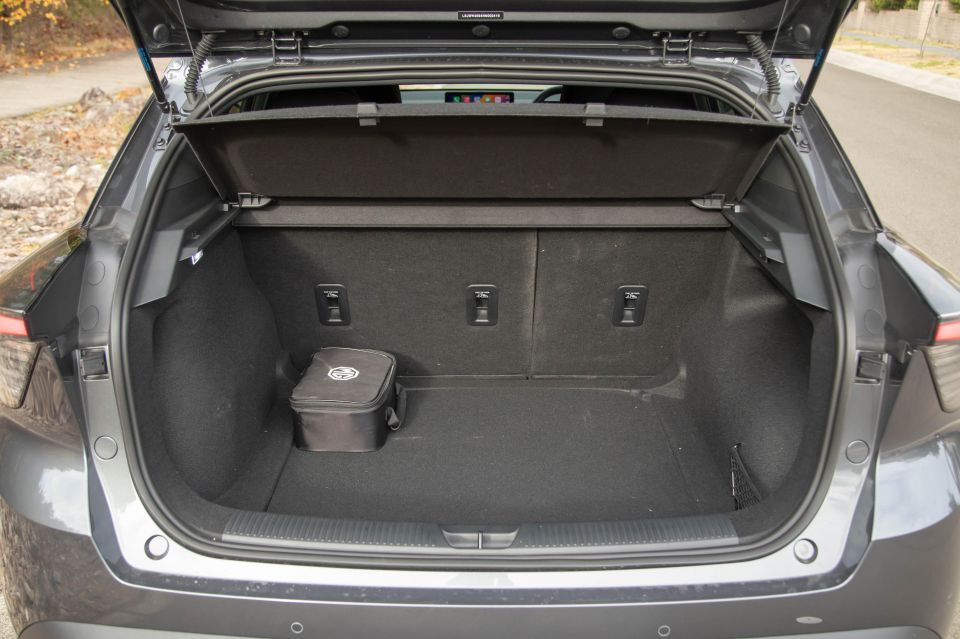
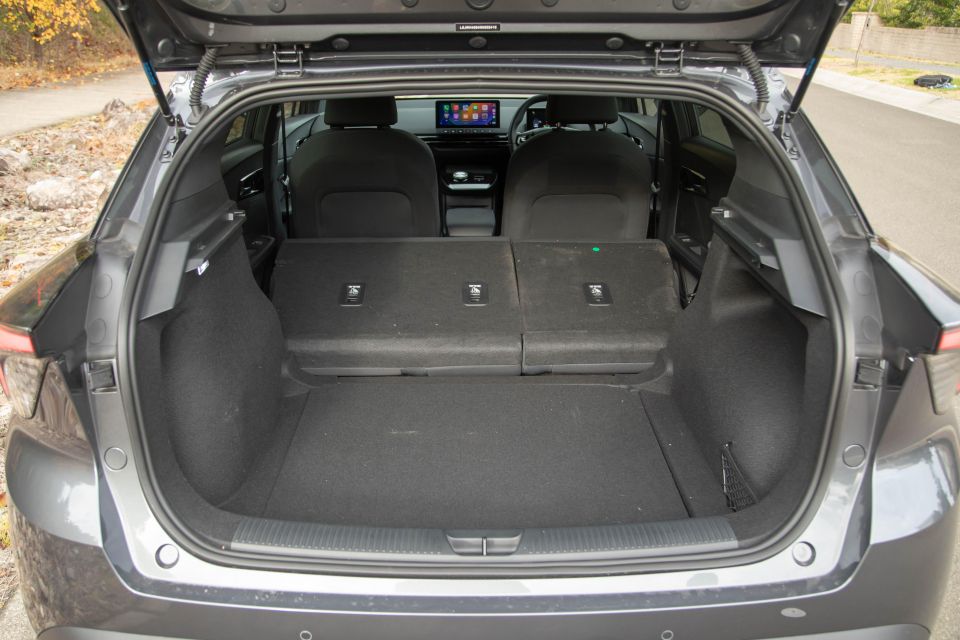
But it is a nice squared off shape, and it’s a pretty deep boot, so you will fit a pram and shopping bags, or a fair amount of luggage.
No spare wheel, as is the case with EVs. There’s a tyre repair kit, and in the boot you also have a zip-up bag with your emergency charging cable – and, weirdly, despite there being space available under the bonnet, there is not storage box under there for the cables.
All MG 4 models at launch are rear-wheel drive, which gives this a point of difference compared with the front-wheel drive GWM Ora and BYD Dolphin.
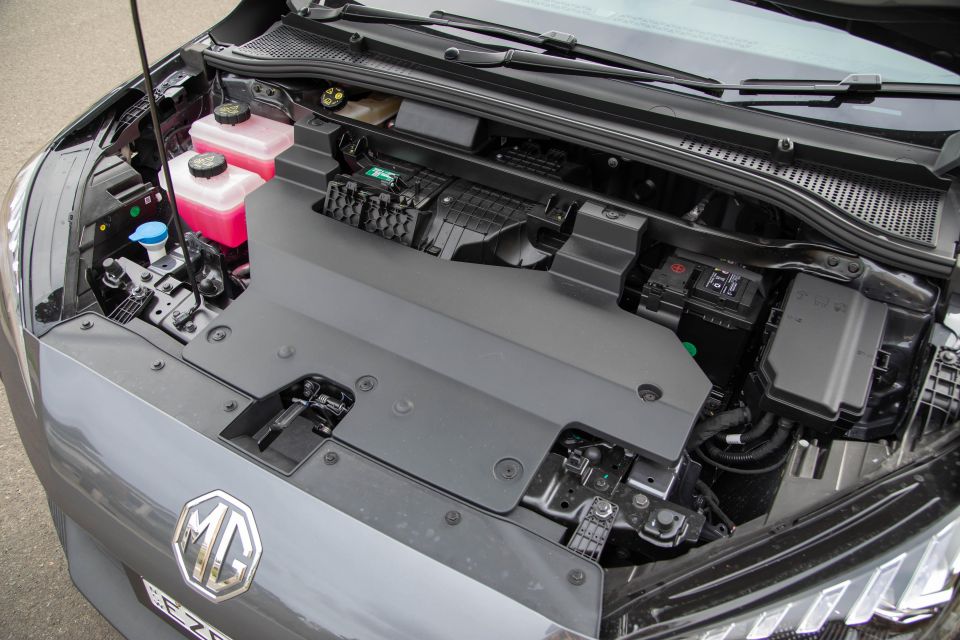
And, there’s likely an all-wheel-drive hyper hatch coming in the the MG 4 XPower – with dual motors and 320kW/600Nm. Read Tony’s review here.
Here’s a rundown of the different powertrain choices at launch.
The MG 4 Excite 51 has – you guessed it – a 51kWh battery pack, which is said to be good for 350km of driving range (WLTP). It has a single, rear-mounted electric motor that produces 125kW of power and 250Nm of torque, with a claimed 0-100km/h time of 7.7 seconds. Let me tell you, it felt faster than that…
Step up to the Excite 64 or the Essence 64 and you have a bit more poke from the rear-motor, with 150kW and 250Nm. These models run a larger 64kWh battery with claimed 450km WLTP (Excite) or 435km WLTP (Essence) driving range. However, the 0-100km/h time is a slower 7.9 seconds as the larger battery pack weighs them down.
Opt for the Long Range 77 and you get a larger 77kWh battery with a claimed WLTP range of 530km, while power is bumped to 180kW/350Nm. The claimed 0-100km/h time is 6.5 seconds.
Way, way better than I expected – that’s not to say that I had low expectations, just that I wasn’t expecting such a pure, enjoyable experience.
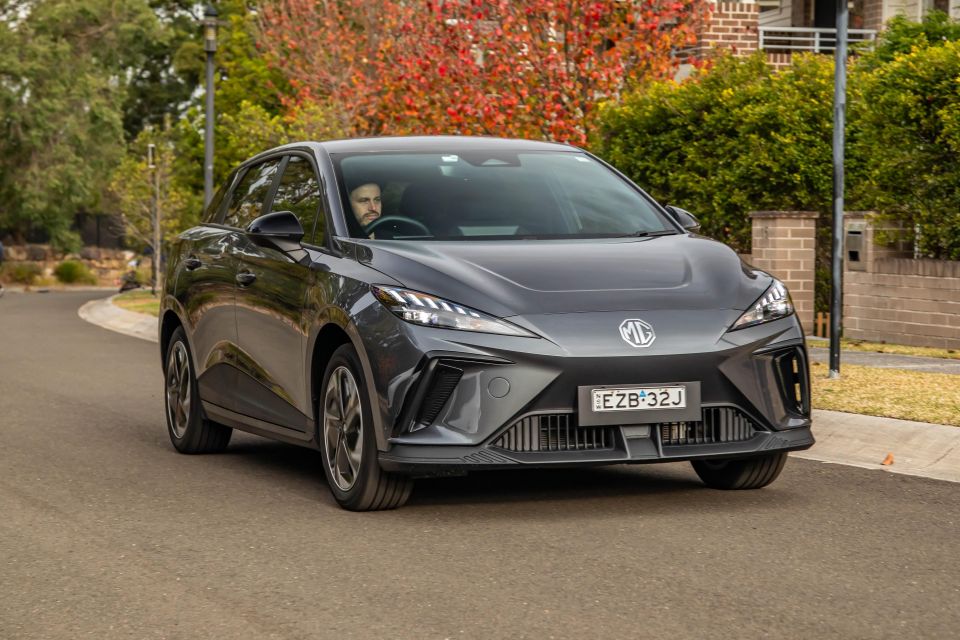
So much of that comes down to the rear-wheel drive layout of the MG 4, which makes it feel innately more balanced and controlled on the road – and not just enthusiastic driving, but the normal day-to-day drudgery we all face when commuting.
For instance, when you accelerate away from a standstill in the wet with cold tyres, you don’t just end up with wheel-spin and a surge of progress. Nope, in the MG 4 you have immense grip and measured acceleration, with really rapid progress from 0-50km/h no matter the road conditions.
It’s speedy, too. I know the 0-100 time is 7.7s for this spec, but on a dry road with good conditions, I reckon it’d post a quicker time than that. Obviously it is better from a standing start than say, when you punch it at 80km/h to overtake a truck, but it still has ample pulling power and lots of speed for an entry-level electric car.
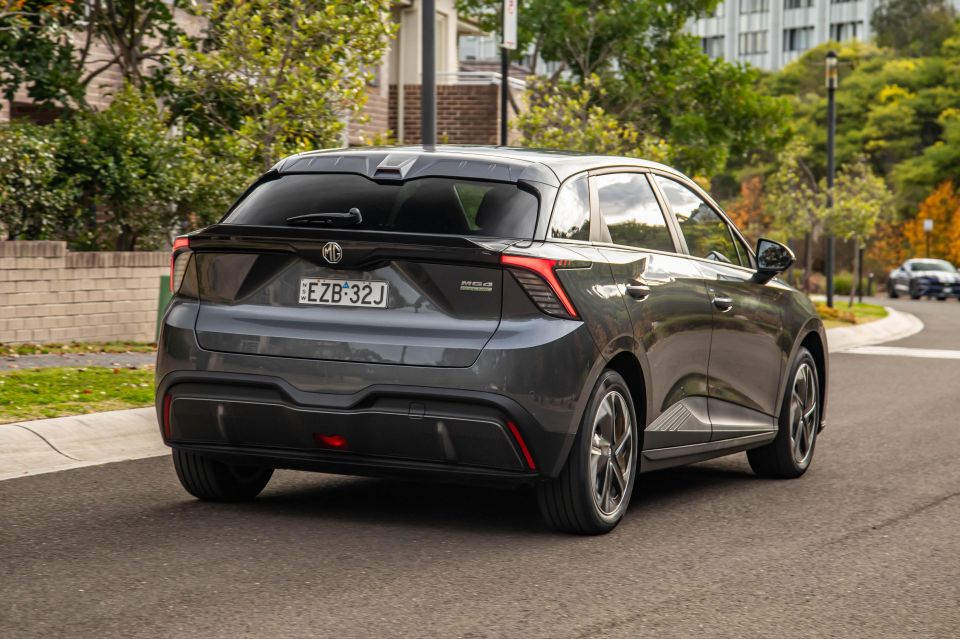
The steering and handling also benefit greatly from the RWD layout. I recently drove the Cupra Born (another rear-drive EV) and this is nearly as much fun as that, with a beautiful balance to the way it changes direction, and a really natural, normal feel to the steering, too.
And, unlike SO MANY other affordable Chinese-made models, this car comes with decent tyres – 215/50 R17 Continental Premium Contact C rubber for this grade.
It is properly good fun, as well. I found myself itching to find a few more corners on my way home, because it has such a lovely and lively drive experience compared to so many other budget EVs, that it feels like you’re getting a more driver-focused bargain if you love driving like I do.
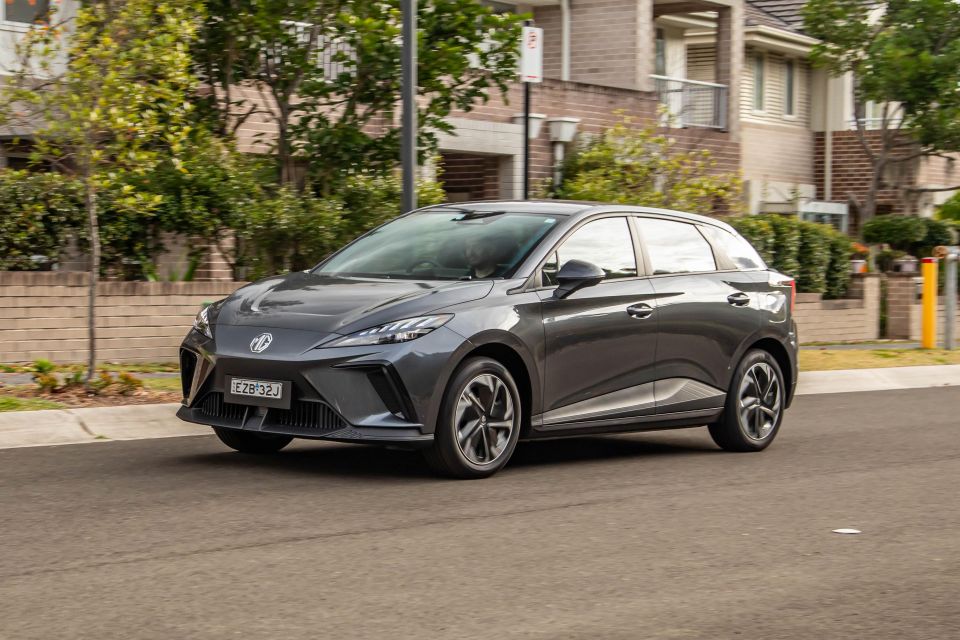
The ride is on the firmer side, and while some buyers might find it a touch too hard for their liking I thought it was appropriate for the feeling of the car, and likewise you can feel the body stiffness in this EV which is reassuring.
There’s a bit of road noise to contend with on the highway, especially on coarse-chip roads, but the drive is so sweet in so many other ways that it wouldn’t be a deal-breaker.
If the base model is this good, I can’t wait to drive one of the more powerful versions.
Standard equipment inclusions is a bit of a highlight for the MG 4, even from the base grade. Here’s a rundown on what you get in each spec.
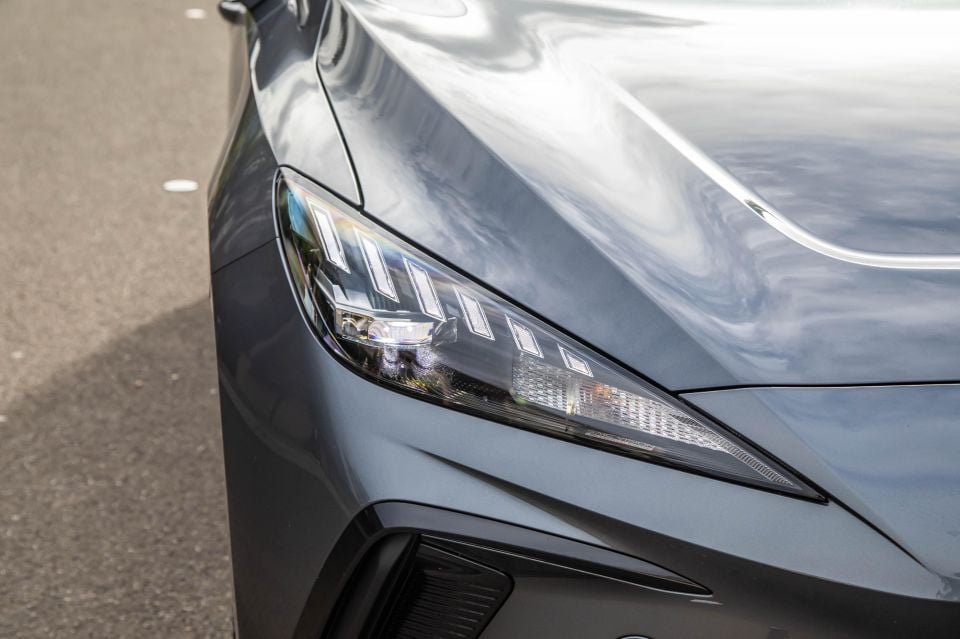

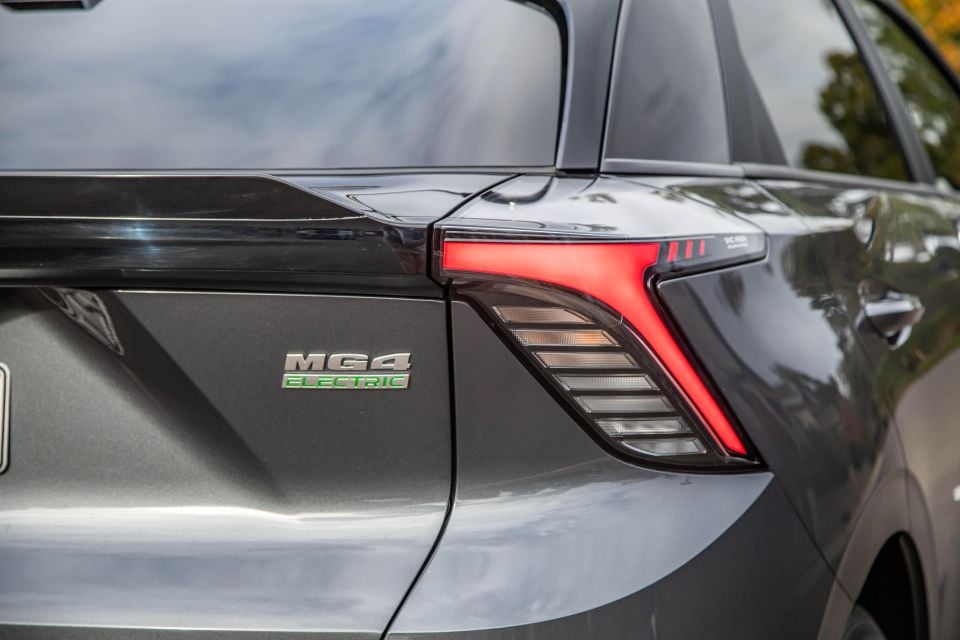

MG 4 Excite 51 highlights:
MG 4 Excite 64 adds:
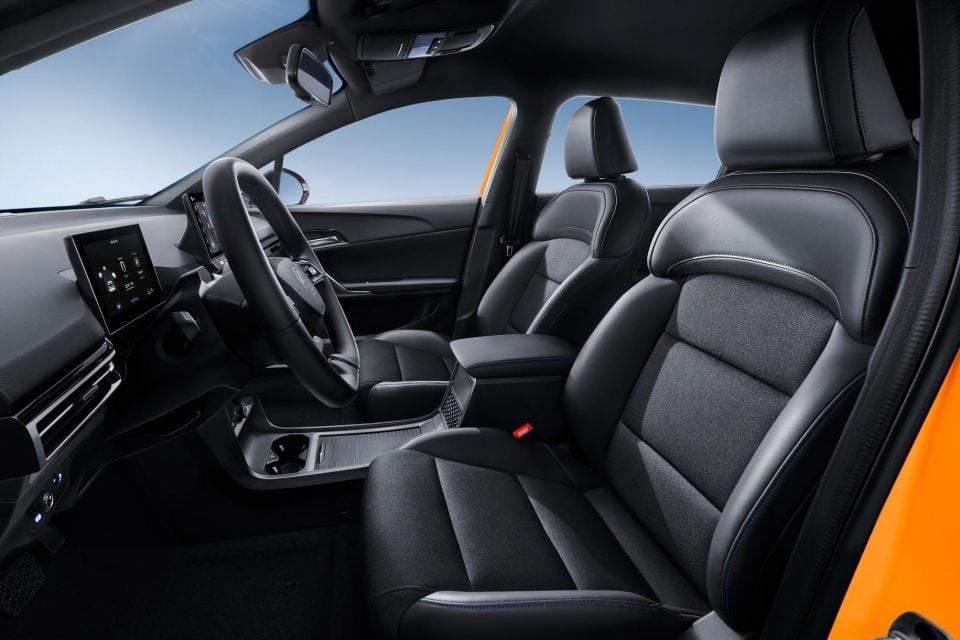
Where expert car reviews meet expert car buying – CarExpert gives you trusted advice, personalised service and real savings on your next new car.
MG 4 Essence 64 adds:
MG 4 Long Range 77 adds:
The MG 4 wears a five-star Euro NCAP safety rating, but at the time of publish it’s currently unrated by ANCAP for the Australian market.
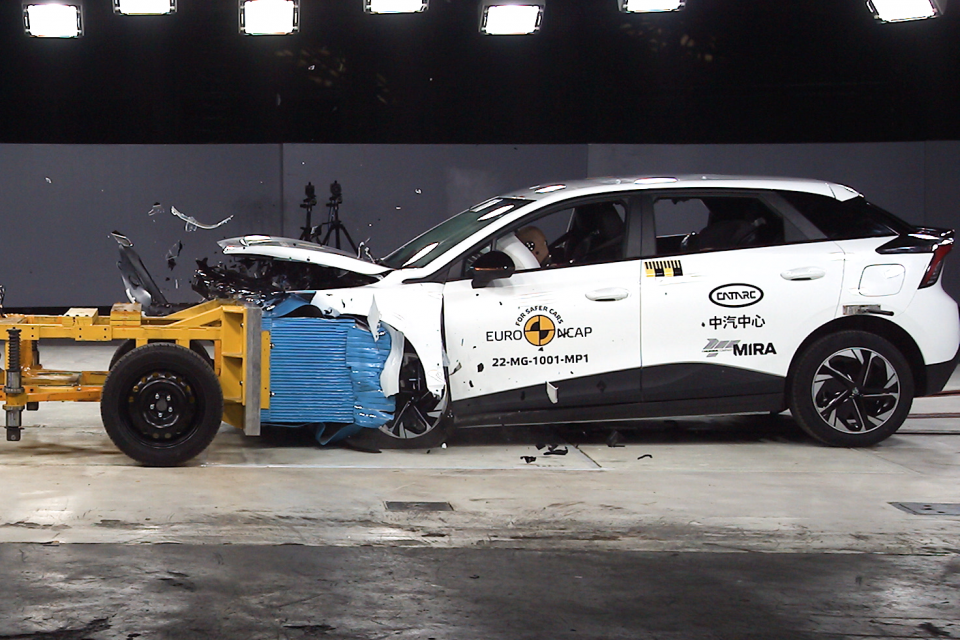
Even so, for adult occupant protection it achieved 83 per cent, for child occupant protection the score was 80 per cent, while for vulnerable road user the score was 75 per cent and safety assist was 78 per cent.
Standard safety equipment includes:
MG 4 Essence adds:
The fact the base models miss out on those items could push you up the range a bit, but you also score a few more worthwhile extras if you are willing to spend more – and that’s why the Essence stands out most to me.
Okay, let’s cover off the claimed efficiency stuff here. All models are relatively efficient on paper.
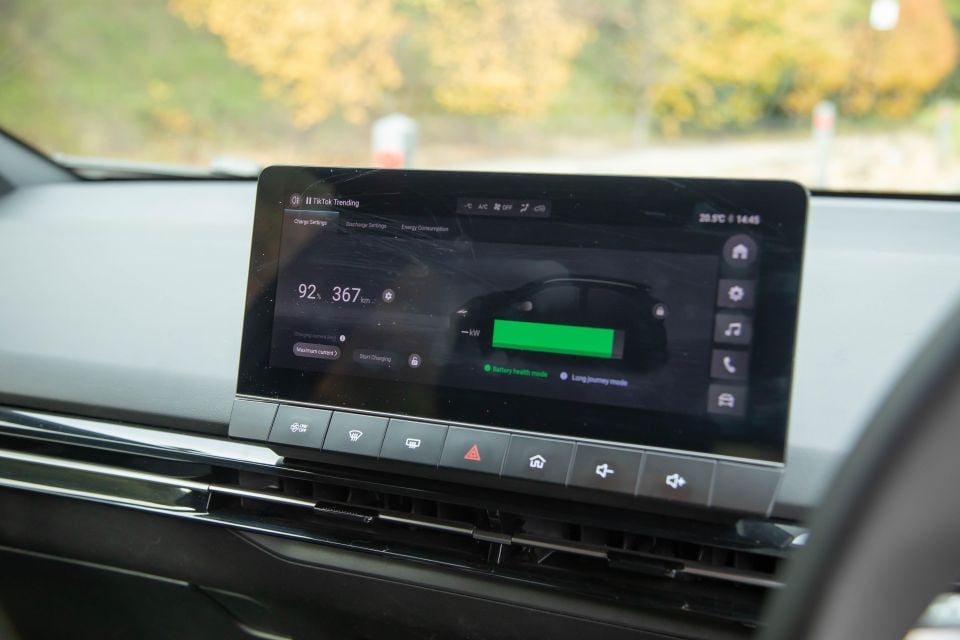
MG 4 energy consumption (kWh/100km)
Those are the official combined cycle WLTP efficiency figures for the variants, and as mentioned earlier I only spent my time in the base 51kWh version.
Over more than 500km of driving, I saw a real-world return of 17.2kWh/100km, which is high – but I did spend most of my time doing highway runs from Sydney to the Blue Mountains, then to Goulburn and back to Sydney.
That isn’t how most people will spend their time in an EV like this, so I kept a note of the efficiency figure for urban tasks and it was right on that 14.5kWh/100km figure in that situation.
Obviously, this is going to make a lot of sense for buyers who have charging available at home or work, though I did use a fast charger to get back from Goulburn, and it took about 35 minutes to get to 70 per cent. The challenge with charging on the road trip can more often be finding a space to charge rather than the wait itself!
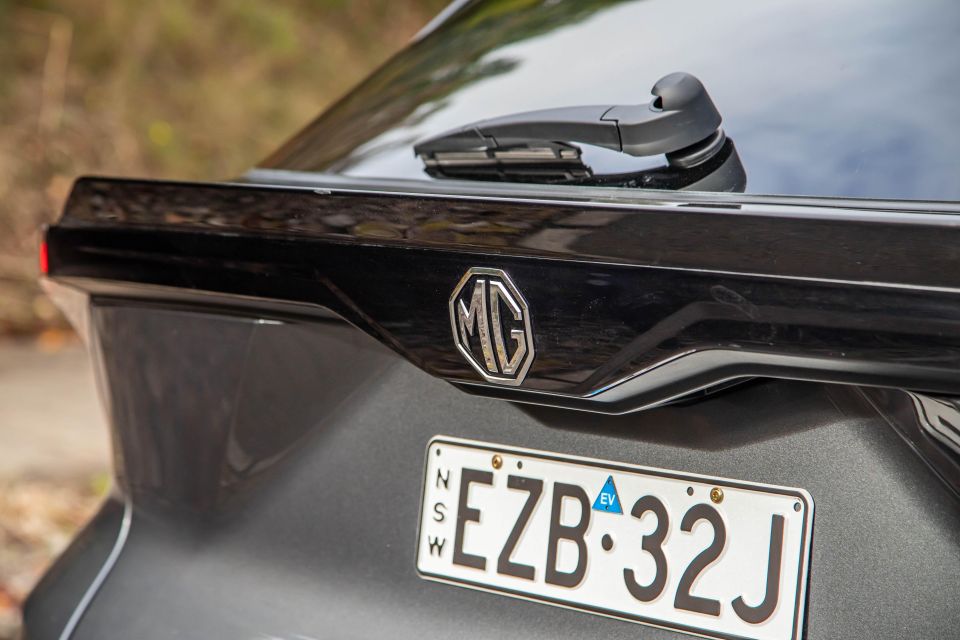
As for ongoing ownership considerations, at the time of publishing MG Australia hasn’t made known the costs for the MG 4 when it comes to maintenance, though it’s expected to be close to that of the MG ZS EV in terms of scheduled service costs. That should mean an average yearly expenditure of about $315, with service intervals pegged at 24 months/40,000km – the average cost for those intervals is $630 per visit over 14 years/280,000km.
There’s a seven-year, unlimited kilometre warranty for the car and the battery pack too. Note: if you plan to use your MG 4 for Uber, Ola or any rideshare/commercial purpose, the warranty is seven years/160,000km.
Roadside assistance is included for seven years, too.
It’s hard not to be impressed by the MG 4.
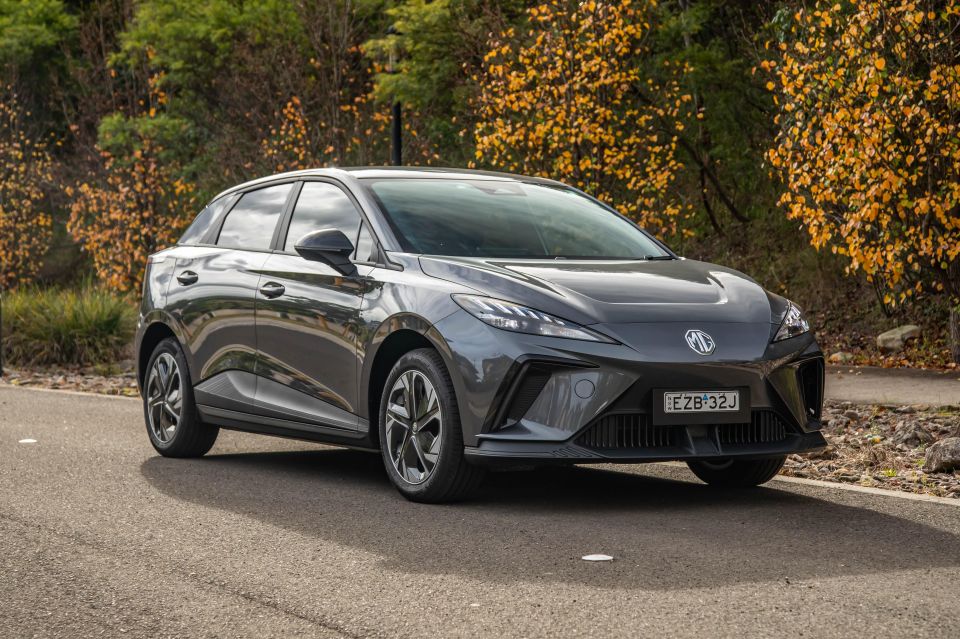
It’s not just a great MG, it’s a great EV for the money and really is worthy of all the praise it has garnered so far in Europe and the UK.
So yep – “BINGO!” for this base model. We can’t wait to see if the other grades stack up just as well.
Click the images for the full gallery
MORE: Everything MG 4
Where expert car reviews meet expert car buying – CarExpert gives you trusted advice, personalised service and real savings on your next new car.
Matt has more than a decade of experience in automotive journalism, and loves exploring the pros and cons of new cars, delving into deep-dive industry stories, and going for a drive just for the fun of it.


Josh Nevett
3 Days Ago


Damion Smy
4 Days Ago


Ben Zachariah
4 Days Ago


Derek Fung
5 Days Ago
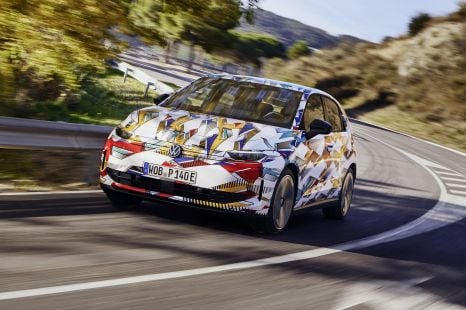

William Stopford
11 Days Ago
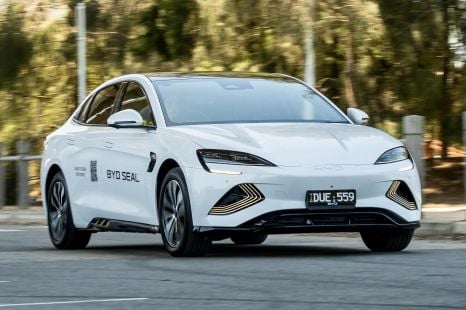

Max Davies
12 Days Ago